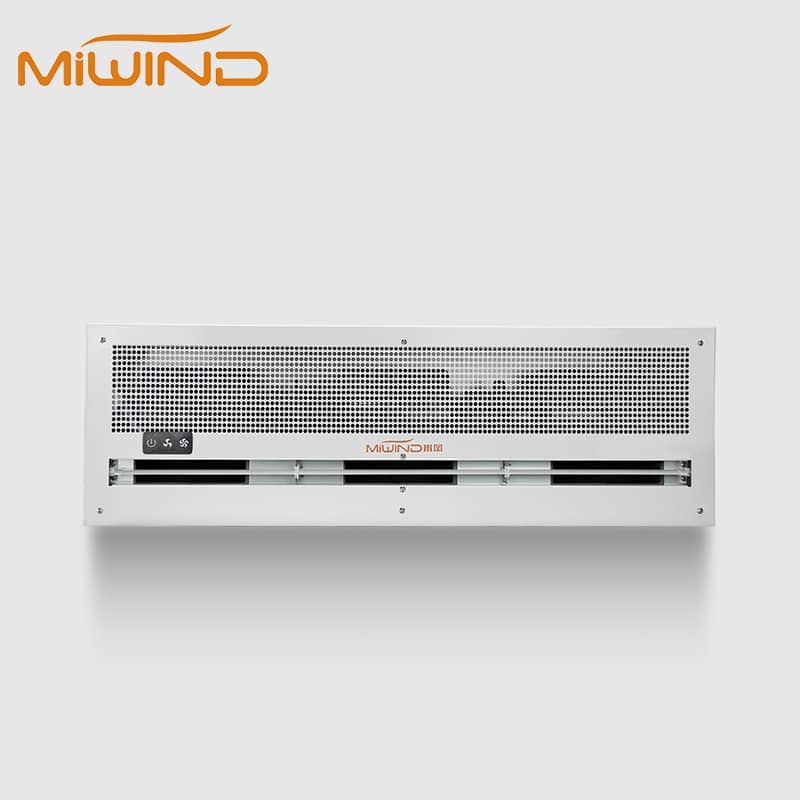
An air curtain, also called an air door, is a device that creates a high-speed air barrier across building entrances. The primary purpose of an air curtain is to regulate indoor climate, improve energy efficiency, maintain air quality, and enhance comfort. Understanding how air curtains work and their use in different settings is essential for both commercial and industrial applications. By preventing the exchange of air between different spaces, air curtains play a crucial role in both commercial and industrial settings.
An air curtain is essentially a high-velocity fan system that discharges a continuous air stream across an opening, creating an invisible barrier. This definition answers questions like "what is an air curtain," "what is air curtain," or "what is a air curtain used for. This stream creates an invisible barrier that separates two environments—typically the inside of a building from the outside atmosphere. Air curtains can be installed above doors or openings and are commonly used in places like supermarkets, warehouses, and hospitals to manage temperature and air quality effectively.
Many people ask, "how do air curtains work" or "how does an air curtain work." The operation of an air curtain involves several key components:
Air Intake: The unit draws in ambient air through an intake grill.
Blower Fan: A powerful fan accelerates the airflow into the air chamber.
Discharge Nozzle: The accelerated air is then directed through a discharge nozzle, forming a laminar flow that travels downward across the doorway.
The effectiveness of an air curtain, or air curtains in general, depends on airflow rate, typically measured in cubic feet per minute (CFM), which is a critical factor in how air curtains work effectively. For optimal performance, the airflow must be sufficient to reach the floor and create a complete barrier against external elements.

One of the main purposes of an air curtain, or the function of an air curtain, is to regulate temperature. It prevents conditioned indoor air from escaping and unconditioned outdoor air from entering, highlighting the essential air curtain function in energy savings and comfort enhancement. This capability is especially important in places where precise temperature control is required, such as grocery stores or cold storage facilities. By minimizing temperature fluctuations, air curtains help reduce the workload on HVAC systems, leading to significant energy savings.
By minimizing energy loss, air curtains contribute to energy efficiency and cost reduction, which explains why the air curtain purpose is crucial in commercial and industrial buildings. When doors are frequently opened—such as during peak customer traffic—air curtains help maintain stable indoor temperatures without requiring constant HVAC operation. This conserves energy and translates into lower utility bills for businesses.
By acting as a barrier against dust, pollutants, and insects, air curtains enhance indoor air quality. They prevent contaminants from entering the building while allowing for easy access for customers and staff. This is especially critical in food service and healthcare settings, where sanitation is paramount.
Air curtains improve building comfort levels by preventing drafts and maintaining consistent temperatures at entrances. This creates a more pleasant environment for both employees and customers, which can enhance customer satisfaction and employee productivity.

In commercial and industrial settings, including retail stores, restaurants, warehouses, and shopping malls, air curtains are essential. Understanding the use of air curtains in these areas helps answer questions like "what are air curtains used for" and "air curtain use" while maintaining indoor climate and hygiene. They help maintain comfortable indoor conditions while allowing for easy access.
In warehouses and manufacturing plants, air curtains are used to separate different operational areas while controlling temperature and humidity levels. They can also be employed at loading docks to minimize the impact of outdoor weather conditions on stored goods.
Hospitals utilize air curtains to create sterile environments by preventing airborne contaminants from entering sensitive areas like operating rooms and patient wards. This application is critical for infection control and patient safety.
Air curtains are commonly found in grocery stores and restaurants to keep out pests while allowing customers to enter freely. They help maintain food safety standards by preventing contamination from outside sources.

Standard Air Curtains: Standard models serve the basic purpose of an air curtain, providing temperature control and pest prevention in commercial spaces.
Equipped with heating elements, these units provide additional warmth during colder months while still performing the standard functions of an air curtain.
These air curtains are designed for high traffic areas and extreme environments. Their function of an air curtain includes managing airflow efficiently, answering "how air curtains work" in demanding conditions.
Air curtains serve multiple vital purposes, including energy efficiency, indoor air quality improvement, temperature regulation, and comfort enhancement. Whether considering "what is the purpose of an air curtain," "air curtain use," or "how does an air curtain work," understanding their function is essential for both commercial and industrial environments. Air curtains provide a practical and efficient solution for modern buildings, ensuring controlled indoor conditions while reducing energy costs. As businesses increasingly focus on sustainability and operational efficiency, the role of air curtains will likely become even more significant.